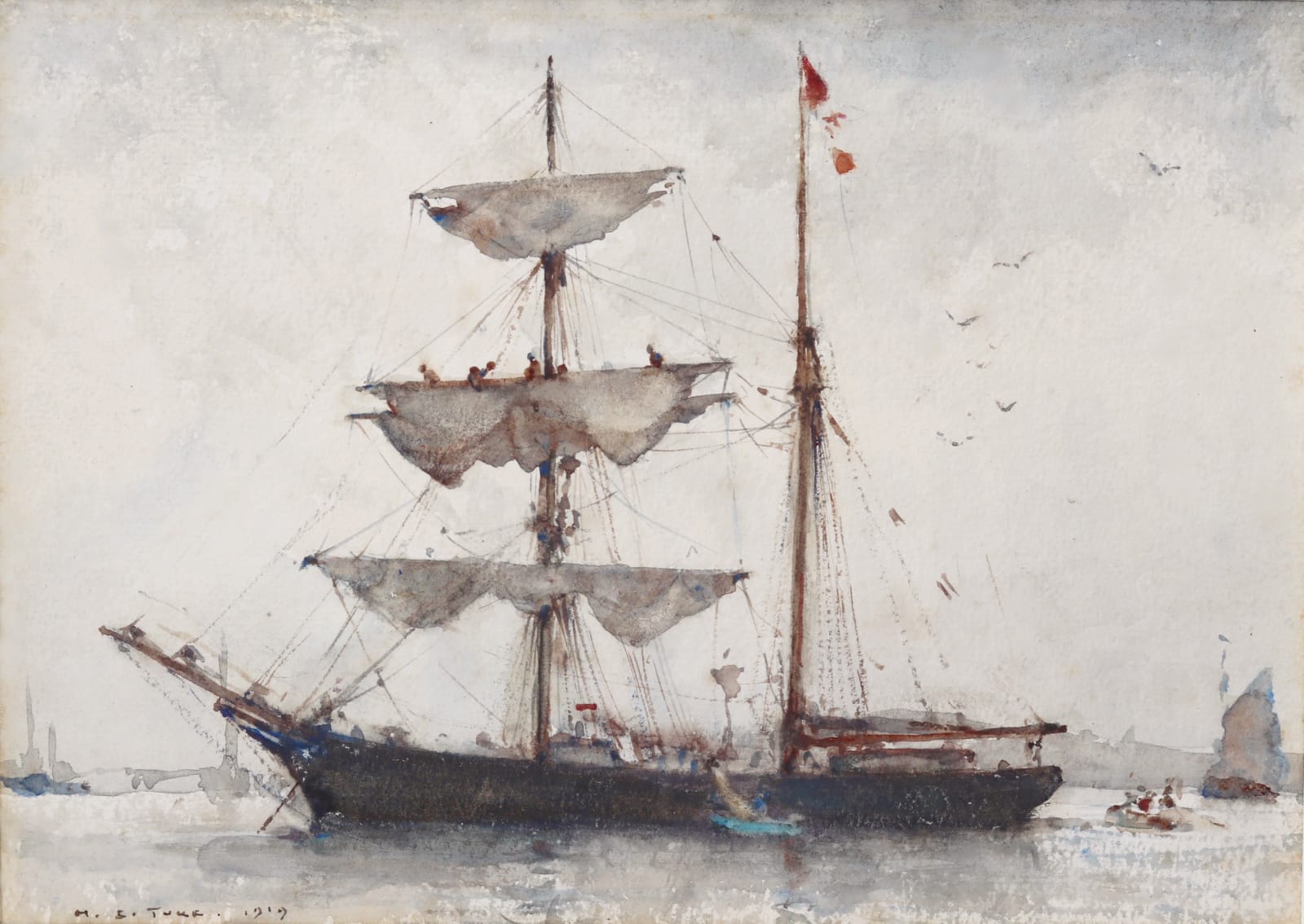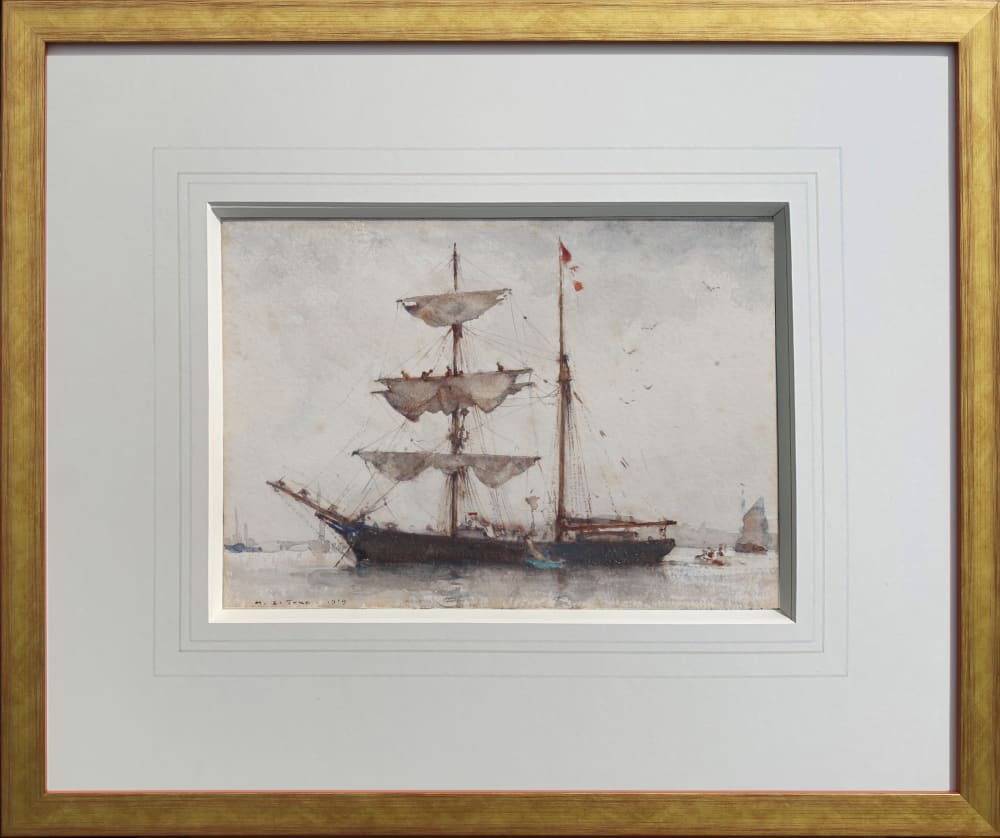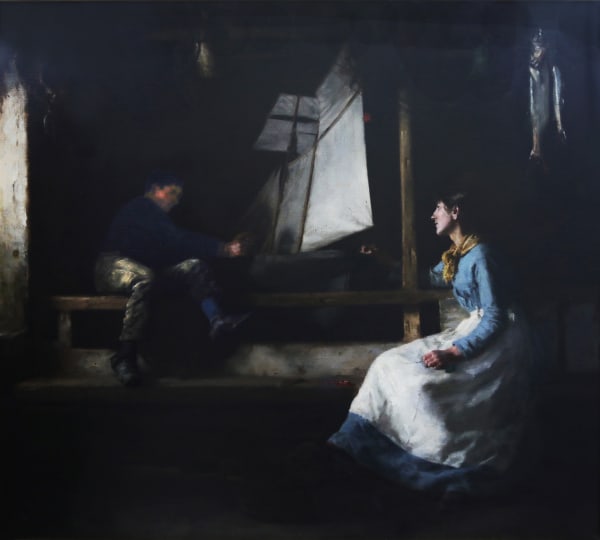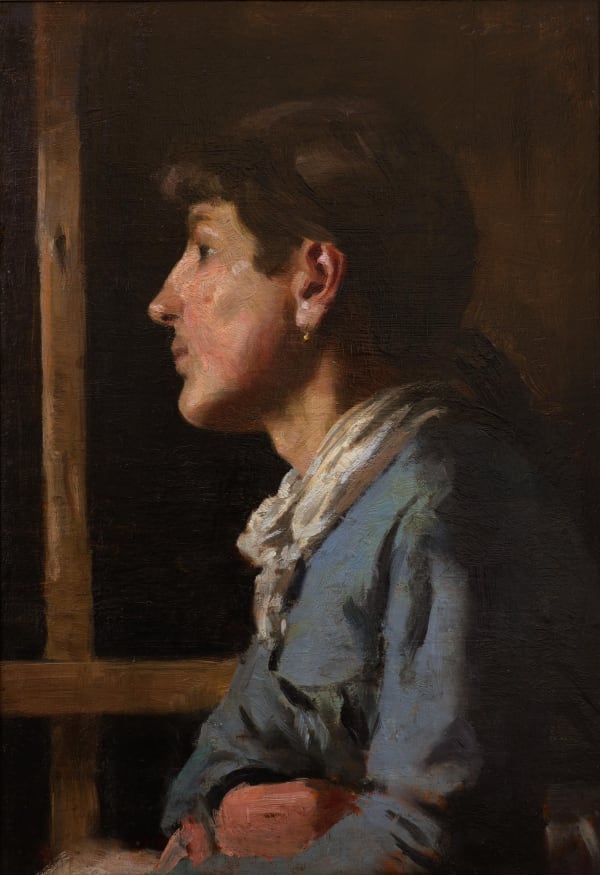Henry Scott Tuke 1858-1929
Framed: 36.5 x 43.2 cm ( 14.4 x 17.0 ins.)
Provenance
Christies 13 Nov 1986, Lot 129
Private UK Collection by 1993
Henry Scott Tuke was arguably most progressive as a painter in his watercolour works where he embraced impressionism. His friend and Falmouth peer Charles Napier Hemy, had a tendency to approach watercolour and oil artworks with the same boldness and brushwork. Tuke on the other hand mastered the medium of watercolour and its particular qualities developing a distinctly impressionist style which is entirely different to his approach in oils. Watercolours allowed Tuke more spontaneity and indulged a natural instinct to capture his impression of the subject. His particular interest was in capturing the light on the water. He never used black in his shadows, but an intense ultramarine blue gives them intensity.
In 1904, in recognition of the artists gift and contribution the medium, Tuke was elected a member of the Royal Society of Painters in Watercolour. In his book ‘The Royal Watercolour Society Collection’, Michael Spender describes Tuke’s watercolour technique: “.. the boat is painted with extreme economy of languid washes and transparent brush strokes, which allow the paper itself to do most of the work. This is exemplary use of the underlying whiteness of the paper to convey light and the most subtly coloured shadows through pigmented wash; which surely reveals Tuke’s knowledge of the theories of local colour – that there is no black, only reflected light in natural shadows, put into practise by the Impressionists.”
Tuke revelled in the detail of a fully rigged brigantine or schooner and since childhood could draw such from memory. His choice of Falmouth was predicated upon the opportunity it presented to capture square rigged sailing ships. Most of Tuke’s marine paintings were, like the present work, of ships anchored in Falmouth’s deep-water harbour through to Carrick Roads. In the present work, painted in 1919, we see a brigantine at anchor in the harbour. 4 or 5 crew members are furling a foresail up to the yard having already furled the other square sails on the foremast. The watercolour palette is very typical for Tuke, dominated by ultramarine and burnt umber and sienna. Little high points of colour – in this case the red flag and tourquise rowing boat alongside, are also a signature touch of the artist. Tuke has deftly washed in an indication of other ships, towards St Mawes, a headland, possibly St Anthony's Head, and a fishing boat to the right of the composition, followed by the ever present gulls in pursuit of an easy meal. Some crew boarding a small rowing boat drawn alongside and another already ferrying crew to Falmouth complete Tuke's detailed observation of the arrival of this beautiful square rigged ship.
-
 Henry Scott TukeTopsail Schooner in Falmouth Harbour, 1919Watercolour17.8 x 25.4 cm (7 x 10 ins)Sold
Henry Scott TukeTopsail Schooner in Falmouth Harbour, 1919Watercolour17.8 x 25.4 cm (7 x 10 ins)Sold
Framed: 36.5 x 43.2 cm ( 14.4 x 17 ins.) -
 Henry Scott TukeShip Builders, 1883Oil on canvas66.0 x 73.7 cm (26 x 29 ins)Sold
Henry Scott TukeShip Builders, 1883Oil on canvas66.0 x 73.7 cm (26 x 29 ins)Sold
Framed: 86 x 93.7 cm (33 7/8 x 36 7/8 ins)
-
 Henry Scott TukeSarah Ann Stevenson (Ship Builders), 1883Oil on panel35.6 x 25.4 cm (14 x 10 ins.)
Henry Scott TukeSarah Ann Stevenson (Ship Builders), 1883Oil on panel35.6 x 25.4 cm (14 x 10 ins.)
Framed: 57.8 x 47.5 cm (22.8 x 18.7 ins.)








